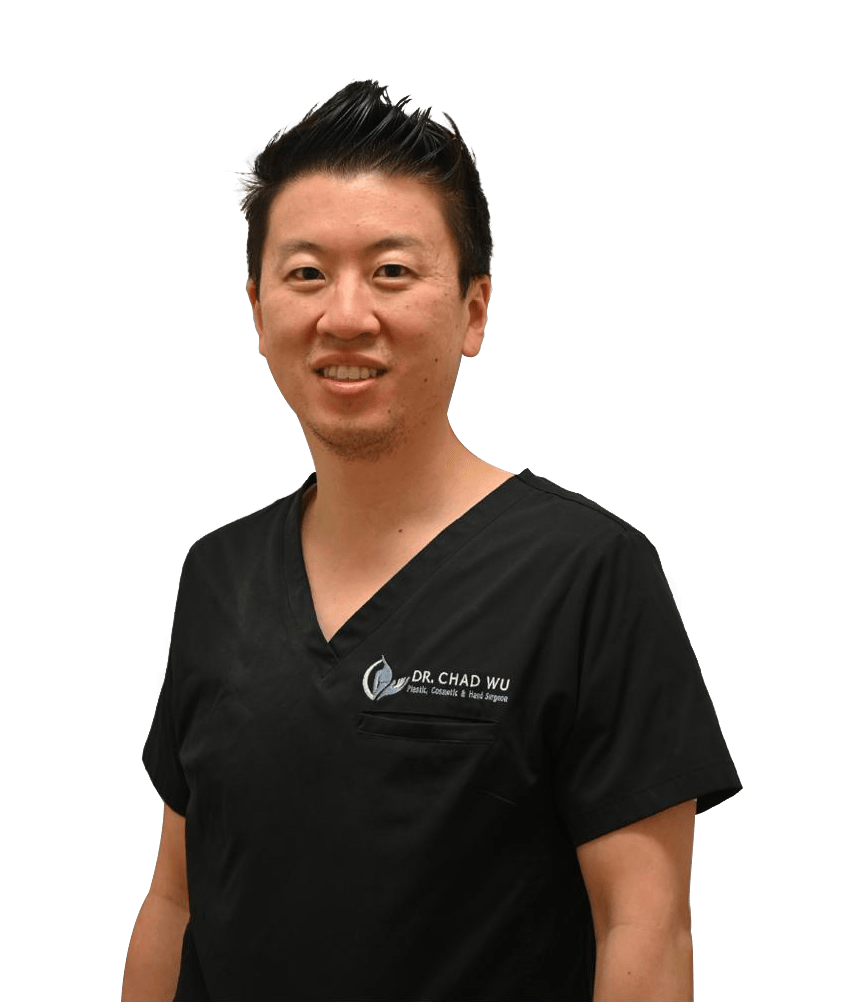Breast implants vs breast lift – picking the right procedure for you By Plastic Surgeon Dr Chad Wu in Irvine and Newport Beach, Orange County, Ca
When someone uses the term “plastic surgery,” most people automatically think of breast augmentation. The correlation is not surprising as breast augmentation has long been the number one sought-after plastic surgery procedure. What do you do if you are unhappy with your breast size, shape, or droop? What type of breast augmentation is right for you?
Several surgical options are available to you depending on what you would like to achieve. Two of the most popular include augmentation (enlargement) and breast lifts. Ultimately a consultation with a board-certified plastic surgeon who specializes in breast augmentation is needed to determine what procedure aligns with your goals. However, outlined below is an overview of the most common breast augmentation procedures and for what the procedures are used.

BREAST IMPLANTS: WHAT YOU NEED TO KNOW
Do you want bigger breasts? If yes, then augmentation is the surgical procedure that will be required. When considering breast augmentation there are four major areas that will need to be considered including placement of the incision, implant size/shape, type of implant and the associated risks.
- Incision and implant placement: The three most common incisions for breast augmentation include inframammary (under the fold of the breast), trans-axillary (in the armpit), or periareolar (around the nipple). Each incisional technique has its set of advantages and disadvantages. I almost exclusively use the inframammary incision technique as it provides optimal access to the breast tissue, has the least chance of complications and completely hides procedural scarring.
- Implant size and shape: When it comes to size and shape you have multiple options. Considerations such as your chest wall shape, your body form, your lifestyle, your natural foundation and your goals must be addressed. A board-certified plastic surgeon who specializes in breast augmentation will be able to discuss what size and shape will look the best and ultimately make you happy. In general, I advise patients not to go up more than two bra cup sizes, as anything larger can overwhelm the chest regarding appearance, diameter and/or width. Also, you do not want to have your entire look overwhelmed by your breasts!
- Implant types: Silicone versus saline depends on multiple factors including desired results, preference and the patient’s body type. Silicone tends to be more expensive, requires a larger incision and is a more involved surgical procedure. However, silicone implants tend to have a more natural realistic feel and are an excellent choice for a patient with very little natural breast tissue. Saline implants work well with a patient who has ample breast tissue, as it can add volume and shape without necessarily changing the feel of the breasts. Incidentally, both types of implants last ten to fifteen years, are FDA approved and have excellent safety records.
BREAST LIFT: WHAT YOU NEED TO KNOW
Loss of breast volume usually leads to breast ptosis (drooping). Breast drooping is especially evident as women age, fluctuate in weight, or bear children. A breast lift will help correct drooping by volumetrically reshaping the breasts. A simple test to determine if you’re a candidate for a breast lift is the pencil test. Place a pencil as high as you can under the breast fold. If the pencil holds, then you have signs of breast drooping. If your nipple falls below the pencil, then you have significant ptosis, and more than likely are a great candidate for a breast lift.
There are three types of breast lift approaches including periareolar, vertical breast reduction and inverted-T incisions. The periareolar incision approach follows the natural areolar shape of the patient and is typically best for someone who has large areolas and minimal breast drooping that needs correction. The vertical breast reduction incision approach follows the same path as the periareolar around the areola but also extends directly down from the areola thus allowing a greater lift for moderate drooping. The inverted-T incision approach follows the same path as the periareolar and vertical breast incision; however, it also includes an incision within the breast fold. The inverted-T incision approach is the most common, most predictable and allows for the maximum breast lift. The technique that is right for you depends on the amount of breast volume, tissue and the degree of ptosis (breast sagging) you have.
Which is better? Breast augmentation? Breast lift? Both?
Each procedure offers its own set of unique advantages and disadvantages. You must understand that a breast augmentation focuses on size and shape of the breast and will not correct drooping breasts. Unlike breast augmentation, a breast lift focuses primarily on breast position and will not increase the size of your bust. Often a breast lift is done in conjunction with breast augmentation so that the breasts can be restored to a more youthful position and a volume increase is added with the use of an implant Having a breast augmentation with a lift, which is called an augmentation/pexy, will give you some upper breast fullness along with repositioning sagging breasts and nipple areas.
Making the decision to alter your breasts is very personal. For your safety and peace of mind, it is always best to consult with a board-certified plastic surgeon who specializes in breast augmentation so that you can rest assured that you will get the best possible outcome. When considering plastic surgery, you need an experienced board-certified plastic surgeon who is an expert in the field and who can show you proof of exceptional results.

